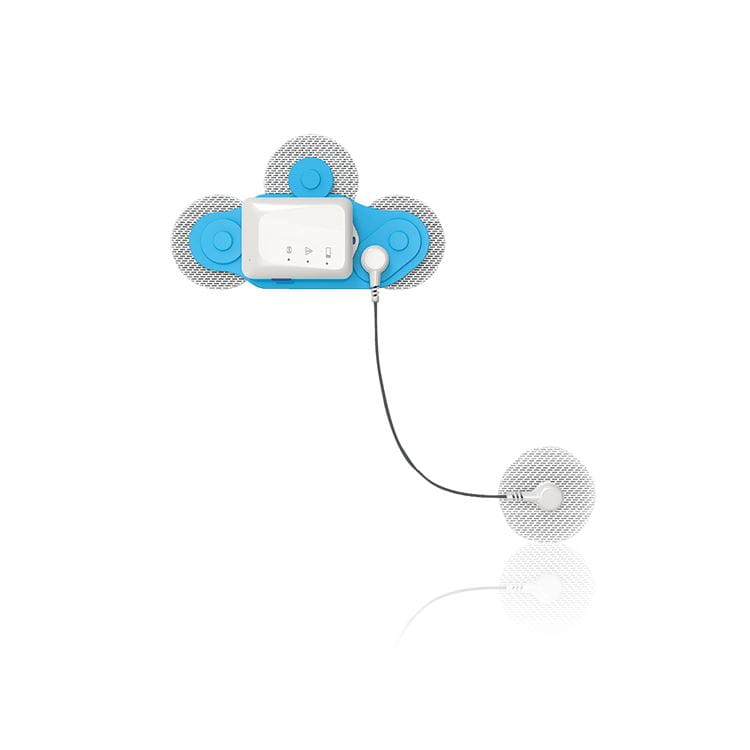Connected health
Let Nordic's expertise help you deliver the health tech your customers rely upon

Chinese biomedical company Borsam Biomedical Instruments has launched its ‘Wireless ECG Monitor Event Recorder’ and ‘ECG Holter Recorder’ home echocardiograms (ECGs), enabling individuals to easily monitor their heart health in the home or remotely from hospital. The Event Recorder can be held to the wearer’s chest to record their ECG data, while the Holter is designed for longer-term wear, and is attached to the chest using stickers and three leads.
The Event Recorder is powered by Nordic’s nRF52832 SoC, its 64MHz, 32-bit Arm® Cortex® M4 processor with floating point unit (FPU) provides ample processing power for the device to continuously record ECG waveform data and detect arrhythmia in ‘real time’. The data is then relayed to an app on the user’s smartphone using Nordic Bluetooth® LE wireless connectivity. From the app the user can review their heart health information, while the data is also relayed to the Cloud where it can be analyzed by the individual’s physician. The ECG Holter Recorder meanwhile sends the ECG data to an ‘ECG Workstation’, which in turn acts as a gateway device to relay the data to the Cloud over a cellular network, without the need for a smartphone. Both the ECG Holter Recorder and the ECG Workstation are also powered by Nordic’s nRF52832 SoC to provide the Bluetooth LE wireless connectivity between the devices.

“It is imperative that an ECG device detects any arrhythmia and myocardial ischemia, but these are not always easily found during routine surface electrocardiogram examinations,” says Yan Gao, Vice General Manager at Borsam Biomedical Instruments. “To ensure our products were capable of sufficiently sophisticated detection, we adopted a high-precision ECG collection chip and a metal electrode sheet with excellent conductivity. The ECG signal is collected through contact with the patient’s skin, using a high sampling rate to ensure that the waveform data is complete and free of distortion.”
The nRF52832 SoC offers the computational processing power to supervise this ECG collection chip thanks to the Arm processor and generous 256/512 KB Flash memory and 32/64 KB RAM. In addition, the processor also has sufficient overhead to power the analysis software that is able to evaluate ECG data as well as identify heart rate variability, heart rate shock, sleep apnea syndrome, and pacemaker functionality, among others.
The Event Recorder is powered by a 3.7V, 230 mAh Li-po battery, which can work continuously for about 24 hours when fully charged. The Holter is powered by a AAA battery, which can work continuously for 5 days when fully charged. This is made possible thanks in part to the low power consumption of the nRF52832, which has been engineered to minimize power consumption through the 2.4 GHz radio’s 5.5 mA peak RX/TX currents and a fully-automatic power management system.
“Because these two products are both portable and wearable devices with high power consumption requirements, we needed to extend the battery life as much as possible,” says Gao. “The fully automated power management system of the Nordic SoC made it the ideal choice.
“Additionally, when creating our own applications, we used Nordic’s SDK to help facilitate the development process. The wealth of reference information available online was invaluable throughout this process.”
Let Nordic's expertise help you deliver the health tech your customers rely upon